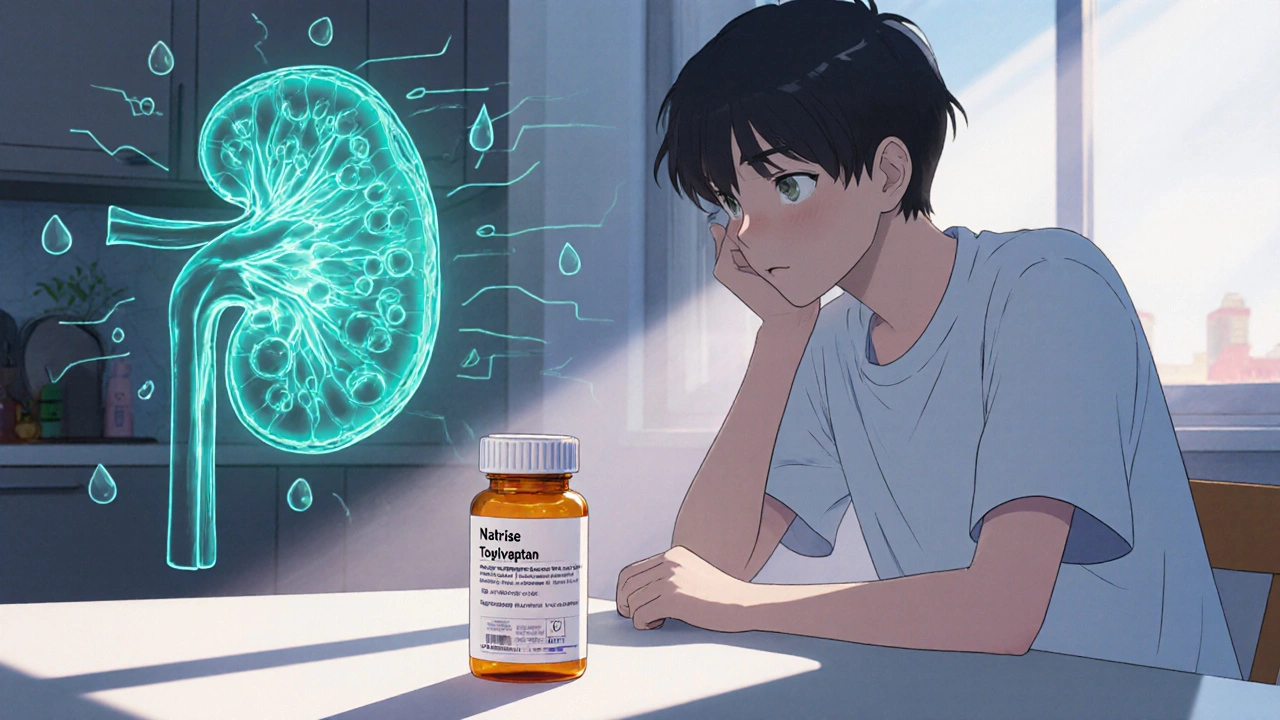When dealing with ADPKD, a genetic disorder that causes fluid‑filled cysts to grow in both kidneys. Also known as Autosomal Dominant Polycystic Kidney Disease, it can lead to high blood pressure, kidney stones, and eventually kidney failure. Understanding the science behind it helps you make smarter choices about meds, diet, and daily habits.
One of the core challenges of ADPKD is the relentless formation of kidney cysts, fluid‑filled sacs that expand the renal tissue and reduce functional space. These cysts aren’t just a nuisance; they compress healthy nephrons, drive up blood pressure, and increase the risk of infections. Managing cyst growth often means balancing water intake, avoiding high‑salt foods, and staying on top of imaging appointments. When cysts start to interfere with kidney function, doctors may recommend specific drug classes to slow the progression.
High blood pressure shows up early in most ADPKD patients, so hypertension, elevated arterial pressure that strains kidney blood vessels becomes a top priority. Controlling it reduces the speed at which cysts enlarge and protects remaining kidney tissue. Common choices include angiotensin‑converting enzyme (ACE) inhibitors and angiotensin‑II receptor blockers (ARBs), which are known to lower protein loss in urine. If you’re already on a blood‑pressure regimen, keep a log of daily readings and share trends with your nephrologist.
When kidney function begins to decline, phosphate buildup can become a hidden threat. This is where phosphate binders, medications that attach to dietary phosphate and prevent its absorption step in. Products like sevelamer, calcium acetate, and lanthanum carbonate are frequently prescribed to keep serum phosphate within safe limits. Choosing the right binder often depends on your calcium levels, pill burden, and any gastrointestinal sensitivities you may have.
Traveling with ADPKD adds another layer of planning. The post titled “Travel Tips for Taking Sevelamer Hydrochloride Safely” highlights practical steps: pack meds in a cool bag, sync dosing with new time zones, and keep a copy of your prescription handy for customs. Even if you’re not headed abroad, the same principles apply to weekend trips—don’t skip doses, stay hydrated, and know where the nearest medical facility is.
Supplements can complement your treatment, but not every vitamin is a win. For example, omega‑3 fatty acids may support heart health, while high‑dose vitamin D could raise calcium and worsen kidney stones. A careful review with your healthcare team ensures you avoid harmful interactions, especially if you’re already on phosphate binders or antihypertensives.
Finally, staying informed about emerging therapies can give you an edge. Clinical trials are testing drugs that target the cyst‑forming pathways directly, hoping to halt or even shrink existing cysts. Keeping an eye on reputable sources—like your nephrologist’s updates or patient advocacy groups—helps you decide if a trial is right for you.
All of these pieces—cyst management, blood‑pressure control, phosphate binding, travel prep, and smart supplement use—form a roadmap that many ADPKD patients follow. Below you’ll find a curated selection of articles that dive deeper into each of these topics, offering step‑by‑step guides, safety tips, and real‑world comparisons to help you take charge of your kidney health.

A detailed side‑by‑side comparison of Natrise (Tolvaptan) with alternative ADPKD treatments, covering efficacy, safety, cost and practical guidance.
Read More© 2025. All rights reserved.